 The clubhouse at the venerable Hirono Golf Club
The clubhouse at the venerable Hirono Golf ClubIf you haven't read the post on Japanese golf protocol, click here to get the full flavor of the structure of playing at a private course in Japan.
The course has a uniqueness to it similar to that of Morfontaine in France or Pine Valley in the United States, with a great routing and unique holes. As with these two great courses, most holes are isolated from the others by dense trees. The par threes at Hirono are especially strong. The course is also one of the best conditioned I have ever seen. The greens and fairways are in meticulous condition and even the trees throughout the course are manicured from top to bottom like a Japanese garden. It also has all the key elements present in the courses of this great designer: strategic bunkering, small elevated greens, double dog-legs and forced carries over ravines.
Most of the greens at Hirono are elevated. The trouble at Hirono is off the tee and around the greens. The course is built on relatively flat terrain and most of the lies you get in the fairway are level. Alison's design is very effective in creating illusions and incorrect depth perceptions.
The 4th green at Hirono, "Lake-Pont"
The 5th hole at Hirono, nicknamed "Fiord" is like a smaller version of the difficult 5th at Pine Valley. It is a par three that plays over water to an elevated green. At Hirono the hole is shorter, at only 152 yards, but plays uphill.
Pine Valley-like 5th hole at Hirono, "Fiord"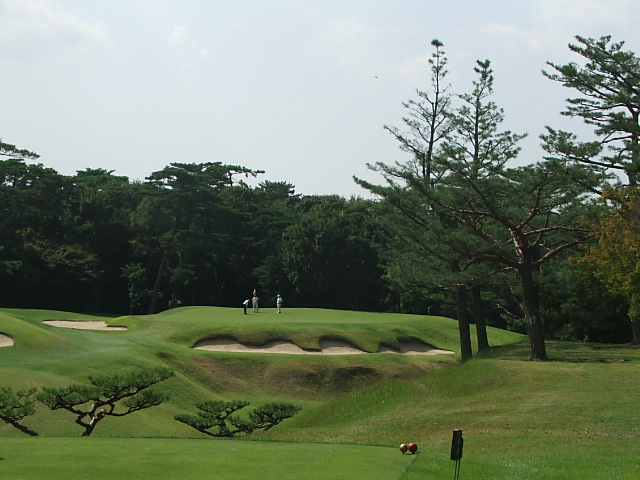
Par three 7th hole, "Devil's Divot"
The same hole is seen below shortly after the course opened in 1933. See how much the course has been 'cleaned up' and polished. It looks like the major hazard of the "Devil's Divot" has been softened, which is too bad; it looks like the course truly had a Pine Valley feel to it when it was built.
The Devil's Divot in 1933
The routing at Hirono varies long and short holes nicely, creating an interesting variety of shots. A good example is the 8th hole, "Cedar Grove," so named because both sides of the fairway are lined with cedar trees. It is a short 353 yard par four with water short right and a green framed by tall bamboo trees behind it, creating a tranquil alcove.
8th green at Hirono, "Cedar Grove"
The 10th green at Hirono, below, is a good example of how Alison elevated and bunkered his greens. This particular green slopes back to front on this 351 yard par four. The hole is nicknamed "Mt. Mekko" for the high mountain that sits in the distance behind the hole.
Elevated 10th green at Hirono, "Mekko"
The 12th hole is the #1 handicap hole at Hirono and it is a double dog-leg par five that plays 596 yards with O.B. along the left side. It is a good hole, but there are two even better holes on the back nine as you come in toward the clubhouse: 14 and 15. In fact, the stretch of holes from 12 through 15 is one of the finest in the world.
The thirteenth hole, "Loch Lomond," is a 167 yard par three that plays downhill over water in an idyllic setting. While not exactly like the par three 14th at Pine Valley, the hole did remind me of it.
13th hole at Hirono, par three, "Loch Lomond"
The 14th hole is like no other hole I have seen (golf hole, that is). It looks unremarkable on the scorecard. It is only 388 yards from the back tees. When you approach the tee you see one of the widest fairways in the world. Perhaps as wide as the combined 1st-18th at The Old Course at St. Andrews. You must hit your tee shot over a ravine to reach the tilted fairway. The fairway tilts both back to front and right to left. So while technically you only have to carry the ball 130 yards to hit the fairway, doing so leaves you with virtually no shot to the green. Only a carry of 200 yards and to the right will leave you on flat ground with a view of the hole. In other words, the first 70 yards of fairway is setup as a hazard. It's brilliant.
The 14th fairway looking back toward the tee
If you do not hit your ball 200 yards to the top of the hill, it will roll a significant distance in the wrong direction, that is, away from the green. The fairway is shaped like a big 'V' and the hole doglegs to the left. The hole is aptly nicknamed "Quo-Vadis" which is Latin for "Where are you going?"
The uphill 14th fairway from the bottom
To give you a sense of the severity of the slope, the hole has its own escalator. That's right, its own escalator. As at all the top Japanese courses, you walk. The gradient is so steep on this hole that if you are fortunate enough to hit your drive long enough (I was), you get on an outdoor escalator installed along the right side of the fairway to spare you the sharp uphill walk.
Only on a small handful of courses in the world can you find two truly world-class holes back to back. The 14th and 15th at Hirono are two such holes. The 15th is a 568 yard par five that once again doesn't look that hard off the tee. A good drive will leave you on the fairway, hopefully on the right-hand side so that you can avoid the big tree on the left side seen below.
Tree blocking approach on 15th fairway, "Ichino-Tani"
Your second shot has to land on a fairway 'island' that provides the only safe passage to the green. There are two ravines to navigate: one short of the green and one between this fairway area and the intermediate fairway. Throw in some severe bunkers around each fairway area and you've got yourself one hell of a golf hole. It is not the kind of hole where you can just blast away with two big shots in an attempt to overpower the hole. The first person to ever reach the green in two was Jack Nicklaus and since then very few golfers have ever done so in competitive rounds. You have to make three strategic choices to get to the green on this well thought out dog-left left hole.
The one thing that keeps Hirono from being ranked higher in the world than 35 are its greens, in my humble view. While they were the best ones I played in Japan from a conditioning standpoint and they played the fastest, because they are bent instead of the slower 'Korai,' they all tend to be relatively flat and roughly in a circular or oval shape in all instances.
Ravine on 15th fairway
I literally and figuratively did the full monty at Hirono. We arrived to have the obligatory pre-round coffee, played quickly and came in for a very nice lunch. I can't remember another golf club that I've played that has white linen table cloths, white glove service and world-class food at the turn. Hirono has a civilized ambiance to it. The appropriate protocol at lunch is to have beer before your meal and coffee afterwards. I didn't feel like having a beer and got the appropriate subtle scolding from our host. Saru mo ki kara ochiru (nobody's perfect). It was a mistake I would not repeat the next day at Naruo, where I would follow the protocol perfectly.
It took me only four times before getting the entire Japanese golfing routine down. We did the post-round communal hot bath in an elegant and appropriately large-sized room. Like everything else at Hirono, it was done perfectly. My post-bath shrinkage was a bit more than I had hoped for, but the geriatric group I shared the bath with didn't seem to gasp aloud when I got out. Faced with an embarrassing situation, the Japanese often resort to silence - mokusatsu. Whereas an American might have given a spontaneous "wooh", they showed no emotion and I'm quite grateful that their custom is to be so polite. They must make great poker players.
Our host at Hirono was a distinguished elderly gentleman. He was 75 years old but looked like he was 60. In general, men in Japan are extremely fit and don't look anywhere near their age. They are also sticklers for the rules of golf. There are no gimmies at Hirono (or in Japan generally). Every single stroke counts. He was even looking subtly to see that I didn't tee my ball ahead of the markers a couple of times during our round.
Alison wrote about Hirono: "Almost every hole has some bold natural feature, and for variety of scene and strokes Hirono is difficult to beat. I can name no superior among British inland courses." While I think Sunningdale and Woodhall Spa are as good as Hirono, Alison's basic point is right on. Hirono is both a classy club and a brilliant Golden Era course designed by one of the masters of the trade and clearly deserves to be ranked among the top 50 courses world-wide.
For a fantastic photo montage of Hirono shortly after it was built from Golf Club Atlas click here. Thank you for posting them Paul Turner.
Hirono's Web Site
P.S. It's too bad you couldn't join us on the Japan trip Sheldon. Although, in hindsight it may have worked out since you probably would have given the old boys at Hirono a cardiac arrest in the bath with your impressive equipment.



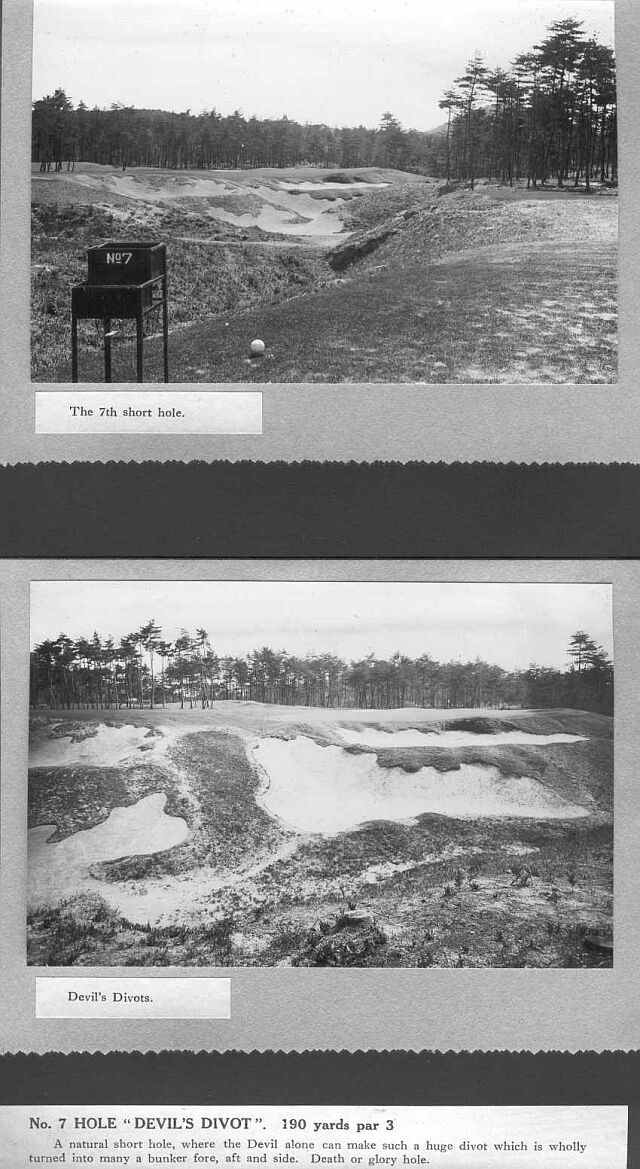
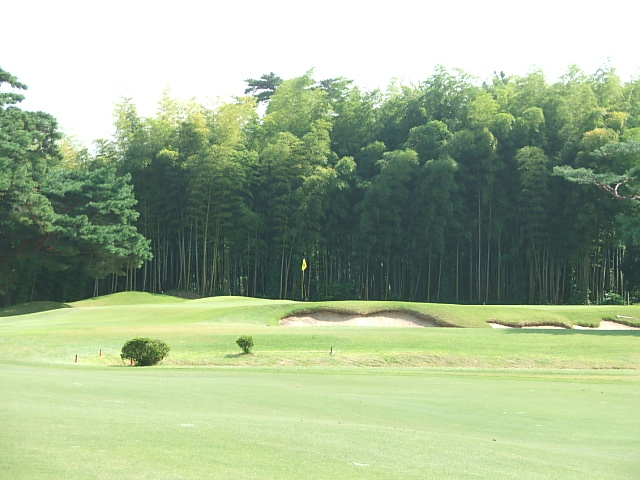
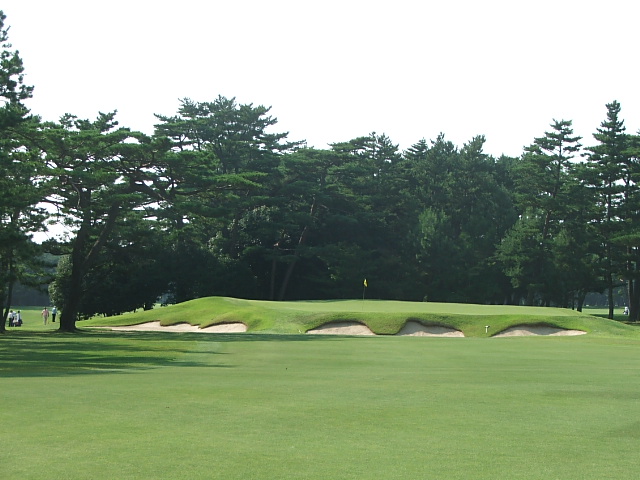
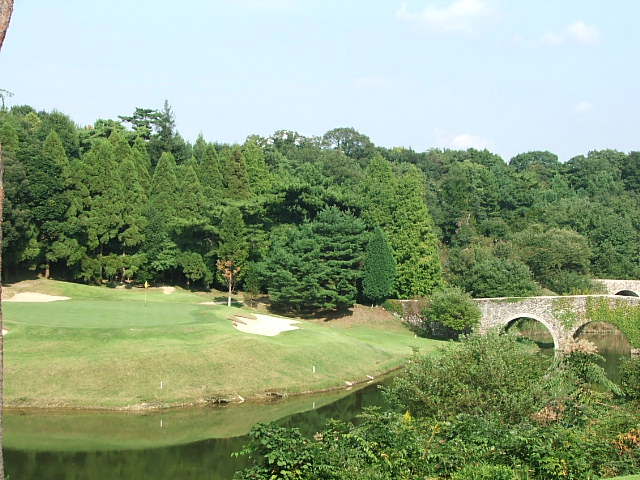
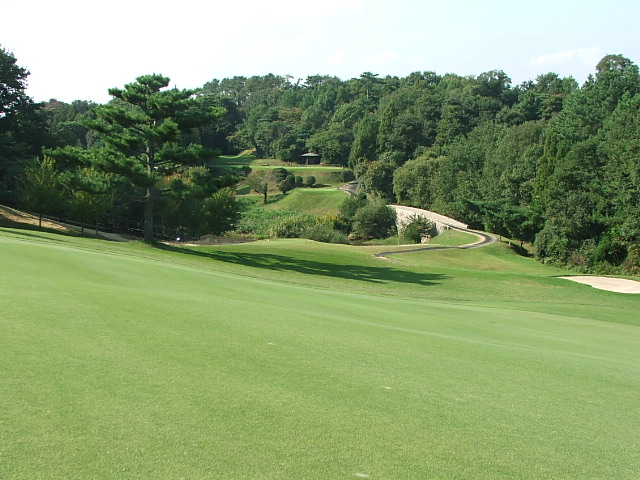
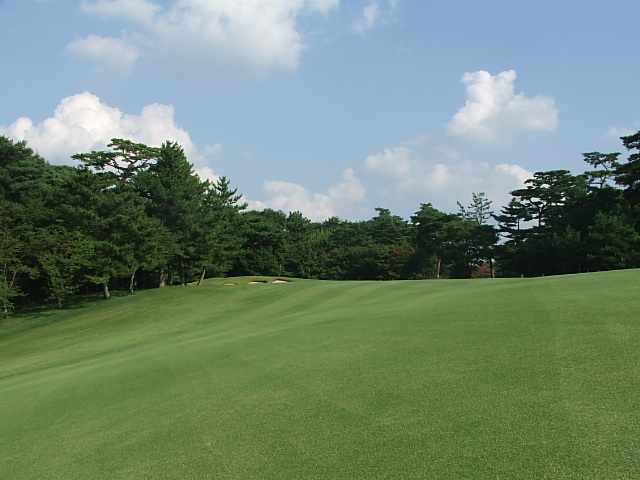
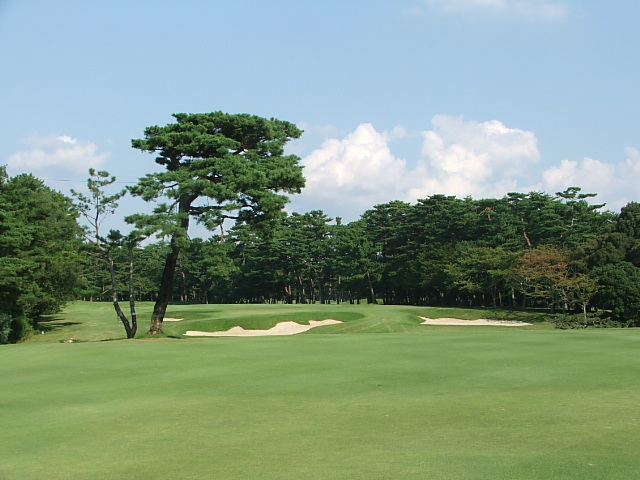
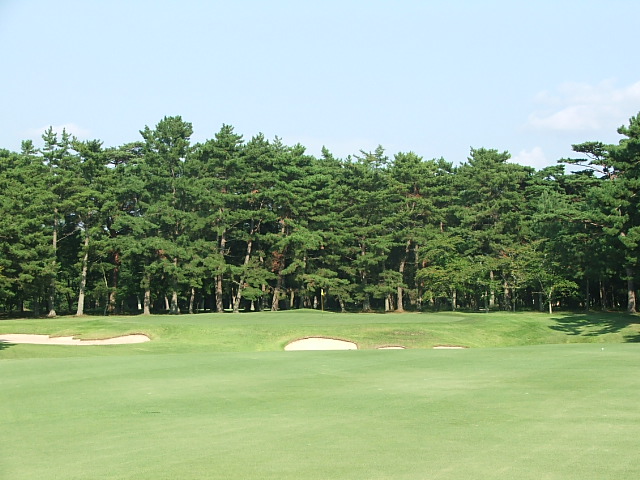
No comments:
Post a Comment